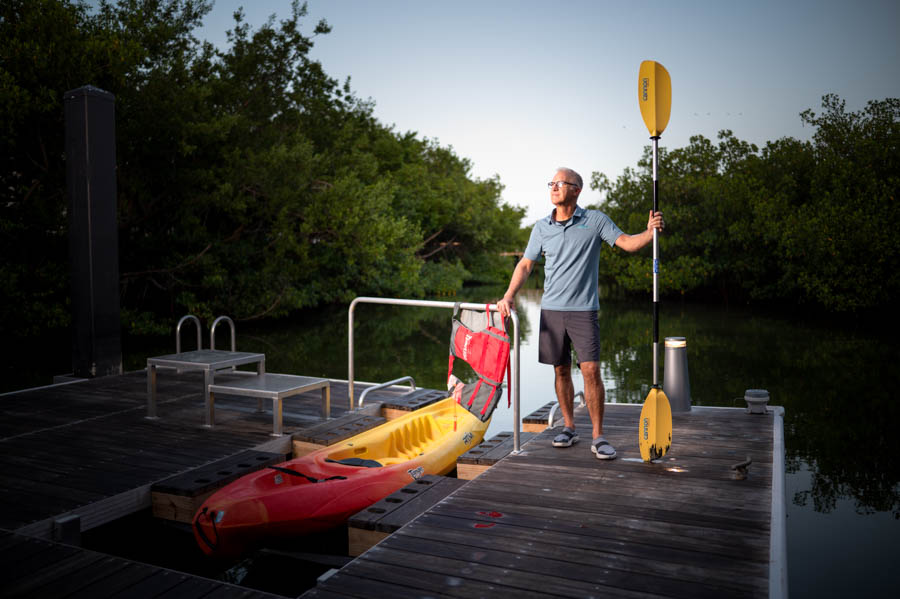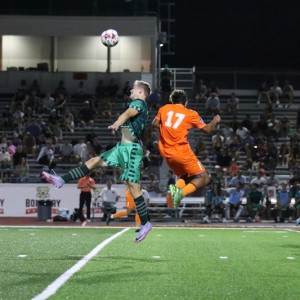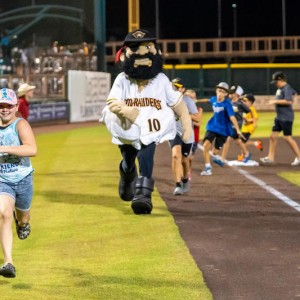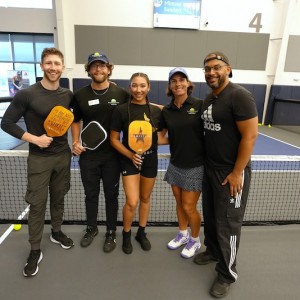Portions of The Bay, the ambitious public space planned at the Sarasota Bayfront, have started to become accessible to the public. We spoke with Bill Waddill, chief operating officer for The Bay Park Conservancy, about what lies ahead.
SRQ: What are the most important recent projects The Bay Conservancy has completed and what’s next in the timeline?
Bill Waddill We are racing to the ribbon cutting of our Phase 1 grand opening. Some of it’s already open, but the 10 acres from U.S. 41 on the south end of the site along Boulevard of the Arts all the way to the water. We’re going to be doing a “10 Days at The Bay” grand opening from Oct. 14-23, with the actual ribbon cutting on Friday, Oct. 21 at 10am. We have a really beautiful but relatively small half-mile walkway called the Mangrove Bayou Walkway that’s open. We did a little improvement to the Fountain Garden here about a year and a half ago or two years ago, but this is our first meaningful chunk of park. It’s about 20% or 25% of the park that will open in October. We’ve been testing different sorts of recreation activities — yoga and things like that — and we’ve been testing different local musical artists to see what resonates with the community.
Early in the visioning process, a set of guiding principles was laid out. How are those directing development of The Bay? Those principles include building a park that’s free and welcoming for all, which we’re doing— and doing it in a way that is a green and blue oasis. Job one is building a great park for our community, but right beneath it, job 1-B is restoring the environment as a part of what we do. I always like to say that while we’ve got the patient open for heart surgery, we’re fixing the kidneys while we’re in there. This is an old site, much of it almost 100 years old. It was built before the Clean Water Act. There are, by our engineers calculations, about 300 million gallons a year of untreated stormwater that flows directly into the Bay every year, so as we build each phase, we’re putting all of that stormwater through our stormwater treatment train. As part of the Mango Bayou Walkway project that we did, we also dredged about two to three feet of polluted silt out of the Bayou. That’s about a quarter-mile-long body of water. For decades sand, oil, and grease from parking lots and U.S. 41 have drained into it. Not much was living in that soil, so we got a permit to dredge out two to three feet of that silt, high in certain pollutants, including arsenic, and then had to take it to a landfill in Apopka. By removing all of that, we restored better tidal flow, so the water is cleaner in that bayou, and then the soil down at the bottom of the bayou is, of course, cleaner. Our environmental experts expect that it will come back to life. We suspected because of when it was built that a lot of it probably didn’t meet current requirements for stormwater treatment, but it wasn’t until we began working on our Phase 1 and the engineers and environmental scientists really dug in and started seeing what the existing conditions were that we discovered how much work there was to be done to pretreat all the stormwater. That’s something that is an important part of our initiative.
Can you tell me what sort of public input have you guys had about what you’ve opened so far? We’ve been asking the community how they liked it. We asked them what they wanted to see, we started testing some of it, and then we asked them what they like. Often the public votes with their feet. Some programs, we get 200 people to, like Zumba and salsa. We know that those are things they’re excited about. Then there are other offerings that we have not gotten as strong a following, and so we’re trying to learn. Is that because we don’t have the right program, or is it the wrong time of year or that kind of thing? We’re learning a lot from our community about what they want to do.
Is there anything people can look to as a model for what The Bay will be, such as Curtis Hixon Park or Central Park? You mentioned two of them. Klyde Warren Park in Dallas is another one. The key to doing a great park for a community is learning from other great parks around the country. (The Bay Chairman) A.G. Lafley and I and some of our other staff, have taken the Central Park Training Course. Central Park’s been around for over a hundred years. There’s certainly a lot to be learned from them on how to build a park, but also how to manage a park. But then what’s key is you take the best practices from other places, but you have to make sure that you incorporate them in a way that fit the site that we have, the climate that we have, the site constraints that we have, this beautiful stretch of the Bay, the environmental constraints that we need, and the things that our community likes to do. You put it in a box and shake it all up and come up with a design that is of Sarasota and the people that live here in Sarasota. That’s what makes it successful. We can’t take Curtis Hixon Park in downtown Tampa and just drop it like it is here.
How will Sarasota’s cultural heritage play into this park? The cultural centerpiece is the planned performing arts center that the city and the Sarasota Performing Arts Center Foundation are working on. That’s probably a six or seven-year initiative and that will be the cultural centerpiece. But we have got some amazing existing cultural activities and buildings in the cultural district alone here that runs along 41, including the city’s first performing art center, the (Sarasota Municipal) auditorium, the city’s first library, the Chidsey Building, city’s first Chamber building and the city’s first Garden Club building, all four of which are on the National Register. We’re already beginning to think about what will be our second major project on the site, which is the cultural district. We’ve begun design. We expect next year to begin construction of a renovation of the cultural district that sort of brings to life and stitches together all of these amazing historic buildings.
What are you most looking forward to bringing to fruition? The thing I like the most is once we open a park, coming to it and watching families come out and enjoy it— kids play on the playground, families throwing a football on the lawn, yoga class under a big tree, getting something to eat at a concession stand, launching their paddle board or kayaking into the bayou. That kind of stuff, to me, that’s probably the most exciting thing. I get a lot of satisfaction out of helping bring a community together with a team and then how our team navigates the process to design, and get building permits, and funding for, and then build a place. Then finally to see it actually come to fruition and see families and people of all ages out there enjoying it. To me, that’s the best part of what I do.











